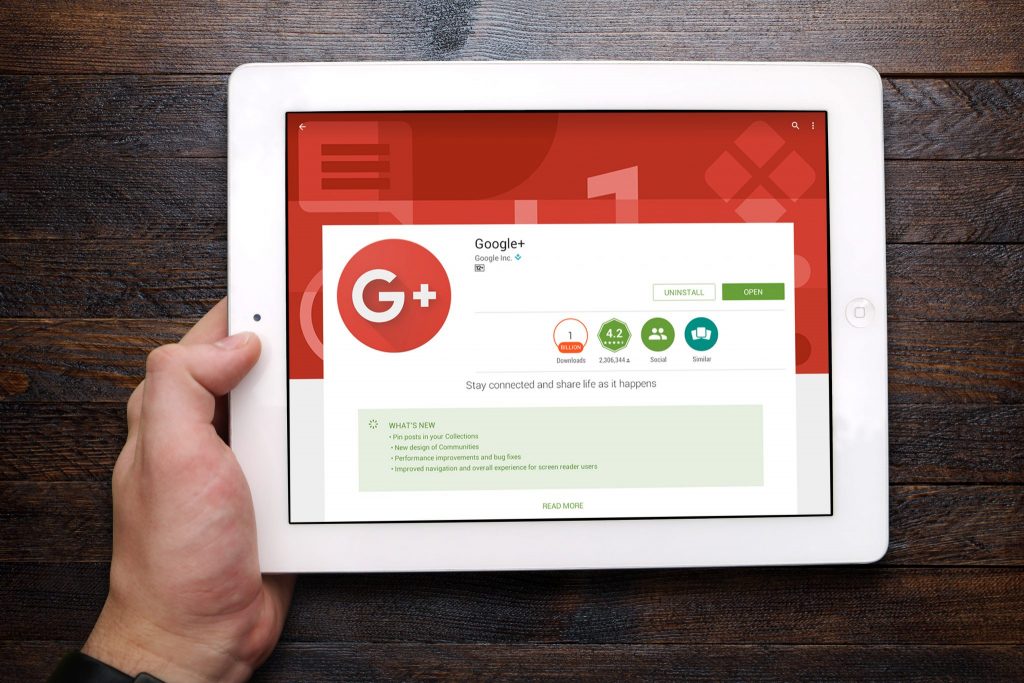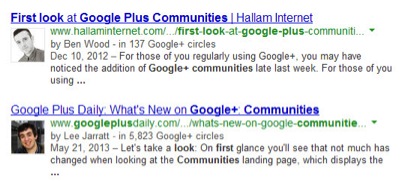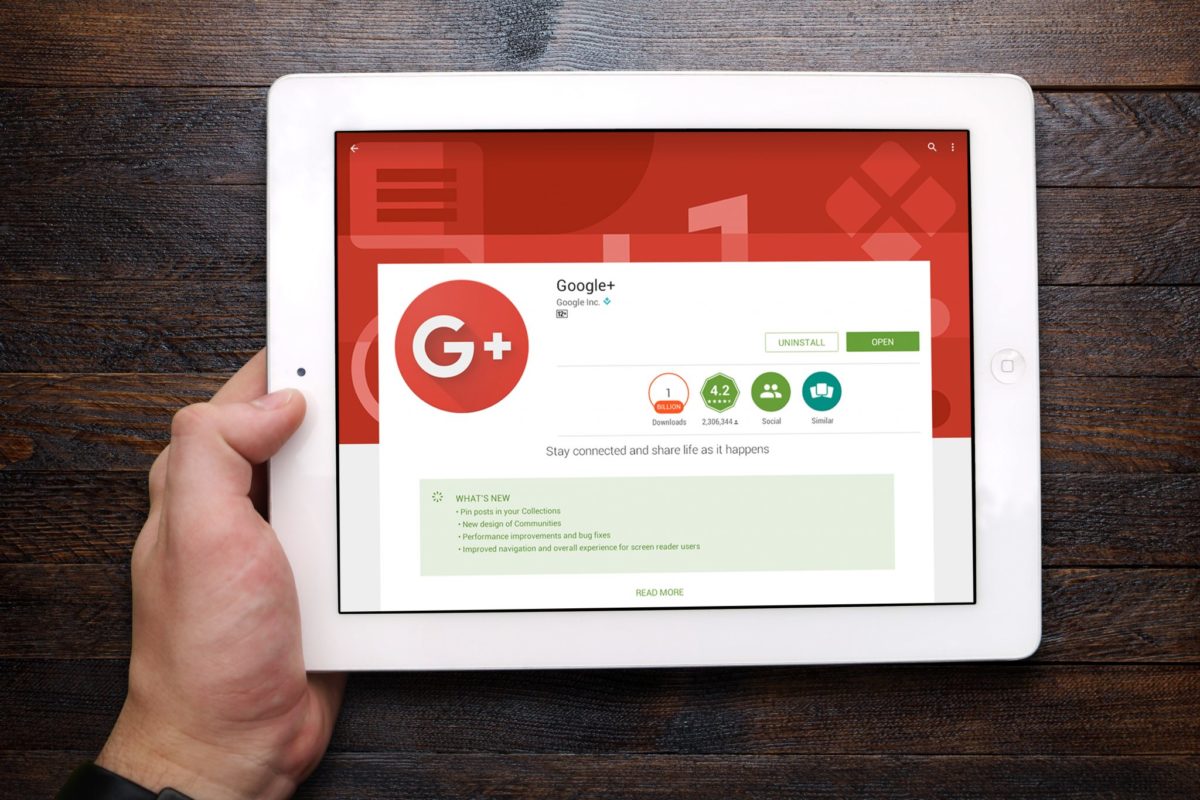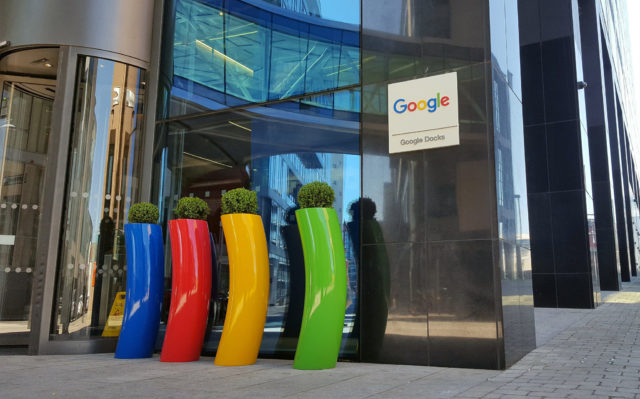After Facebook in March, it’s Google’s turn to face the consequences of a data breach. As a result of the data violation, the company has decided to close its social media network. Facebook didn’t shut down its business so you might be wondering why Google+ is being taken off the market. I explain why this is below.
Google+ who?
Google+ was launched with a bang, but the truth is that it’s been dying a slow death over the last few years. TechCrunch announced the beginning of the end back in 2014.
The concept of Google+ was great. An asymmetrical social network that is fully integrated with all of Google’s services. Similar to Twitter, being asymmetrical meant users had the capacity to grow their networks without being dependent upon reciprocity. Additionally, being able to integrate the social network with all of Google’s services meant that content you posted could appear in the SERPs of Google, as opposed to the walled garden networks of Facebook, Twitter and Linkedin that restrict Google’s access to their data.
For digital marketers and business owners, this platform promised plenty. Google+ was another channel that offered an opportunity to improve your business’s organic visibility, boost traffic and increase user engagement with your brand.
Unfortunately, Google+ never really took off as a social network. It never legitimately became a competitor for Facebook, Linkedin or Twitter. In theory, up to 2.2 billion users are registered with Google Plus, because you have to log in to the platform to gain access to Gmail, Google Drive and Google’s other apps. However, active users are known to be a fraction of that number, with as few as 4-6 million active users reported. Google themselves this week added that “The consumer version of Google+ currently has low usage and engagement: 90 percent of Google+ user sessions are less than five seconds.”

Why is Google+ shutting down?
After years of speculating that Google will be shutting down Google+, the recent data breach seems to be the tipping point for Google to do just that. The internet giant announced yesterday on its blog that a bug had been accessing private user information through Google+ People application programming interfaces (APIs).
The bug made it possible for 438 apps to access users’ and their friends’ non-public personal details. They retrieved profile fields such as email addresses, birth dates, gender, profile photos, places lived and occupation. Google estimates that over 500,000 users have been affected, although there is no evidence that the data was misused.
The company discovered that the bug had been active since 2015 in March this year. It didn’t make the news public for fear of public outrage, especially because the Facebook Cambridge Analytica scandal was in full swing at the time.
The same blog announces the shutdown of the consumer version of Google+. Google’s Privacy & Data Protection Office review “did highlight the significant challenges in creating and maintaining a successful Google+ that meets consumers’ expectations”.
The shutdown will be rolled out over the next 10 months, scheduled to be completed in August 2019. Google+ won’t completely disappear, but it will be turned into an internal social and communications platform for businesses. Google will release more information on this at a later time.
How does this affect you?
The impact Google+ has on SEO and your digital marketing strategy has not been significant for some time now, and it’s unclear on how Google will exactly reposition the product. What we do know is that Google is winding down the platform for consumers slowly, sunsetting Google+ on 2nd April 2019. This will allow users the opportunity to migrate their data.
During this time we expect Google will release more details on how they intend to use Google+ as an enterprise product and their new purpose-built business features.
Hallam Digital Director, Ben Wood, comments:
“Like most people, I’m not hugely surprised at this news. One of the main areas in which Google+ was so popular was the SEO community, due to the prominence of Google Authorship in the search results. To be eligible for these results to display, users had to have set up an active Google+ profile.
Here’s an example of what this looked like in Google’s search results:

Many press outlets are reporting that Google has sped up the decision to kill the platform due to a security flaw which went unannounced earlier this year. Google has instead stated reasons in a blog post around low usage and engagement on Google+.”
As soon as we have further news from Google, we’ll provide advice on what actions you should take if you use Google+ as part of your digital marketing strategy.
If you have any questions about social media or SEO, please don’t hesitate to get in touch with us.
Update on 5th February 2019:
If you have a consumer (personal) Google+ account or you manage a Google+ page, you will have received this email from Google which explains what the next steps are:
“In December 2018, we announced our decision to shut down Google+ for consumers in April 2019 due to low usage and challenges involved in maintaining a successful product that meets consumers’ expectations. We want to thank you for being part of Google+ and provide next steps, including how to download your photos and other content.
On April 2nd, your Google+ account and any Google+ pages you created will be shut down and we will begin deleting content from consumer Google+ accounts. Photos and videos from Google+ in your Album Archive and your Google+ pages will also be deleted. You can download and save your content, just make sure to do so before April. Note that photos and videos backed up in Google Photos will not be deleted.
The process of deleting content from consumer Google+ accounts, Google+ Pages, and Album Archive will take a few months, and content may remain through this time. For example, users may still see parts of their Google+ account via activity log and some consumer Google+ content may remain visible to G Suite users until consumer Google+ is deleted.
As early as February 4th, you will no longer be able to create new Google+ profiles, pages, communities or events.
See the full FAQ for more details and updates leading up to the shutdown.
If you’re a Google+ Community owner or moderator, you may download and save your data for your Google+ Community. Starting early March 2019, additional data will be available for download, including author, body, and photos for every community post in a public community. Learn more
If you sign in to sites and apps using the Google+ Sign-in button, these buttons will stop working in the coming weeks but in some cases may be replaced by a Google Sign-in button. You’ll still be able to sign in with your Google Account wherever you see Google Sign-in buttons. Learn more
If you’ve used Google+ for comments on your own or other sites, this feature will be removed from Blogger by February 4th and other sites by March 7th. All your Google+ comments on all sites will be deleted starting April 2, 2019. Learn more
If you’re a G Suite customer, Google+ for your G Suite account should remain active. Contact your G Suite administrator for more details. You can also expect a new look and new features soon. Learn more
If you’re a developer using Google+ APIs or Google+ Sign-in, click here to see how this will impact you.
From all of us on the Google+ team, thank you for making Google+ such a special place. We are grateful for the talented group of artists, community builders, and thought leaders who made Google+ their home. It would not have been the same without your passion and dedication.”






